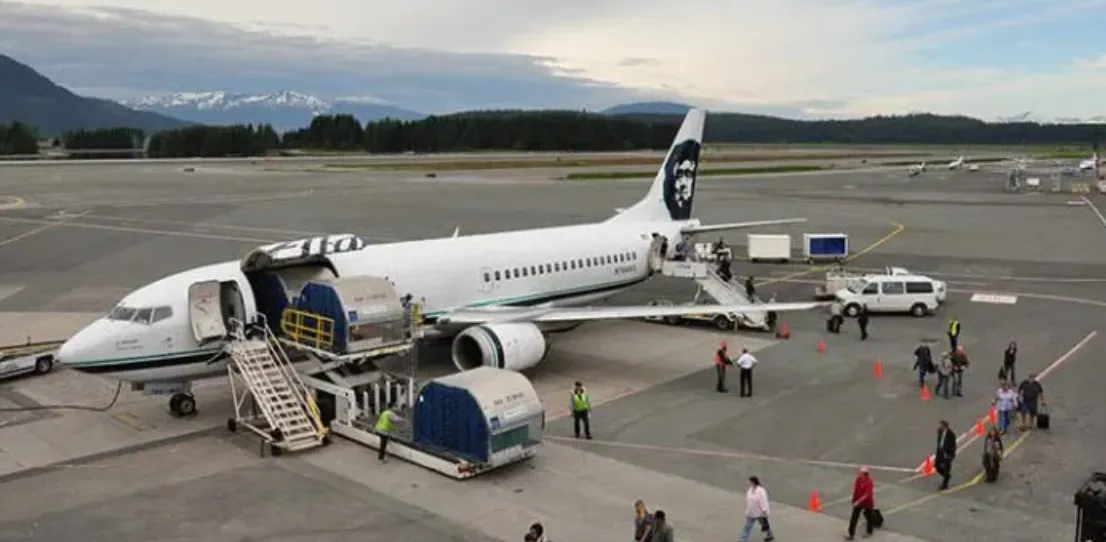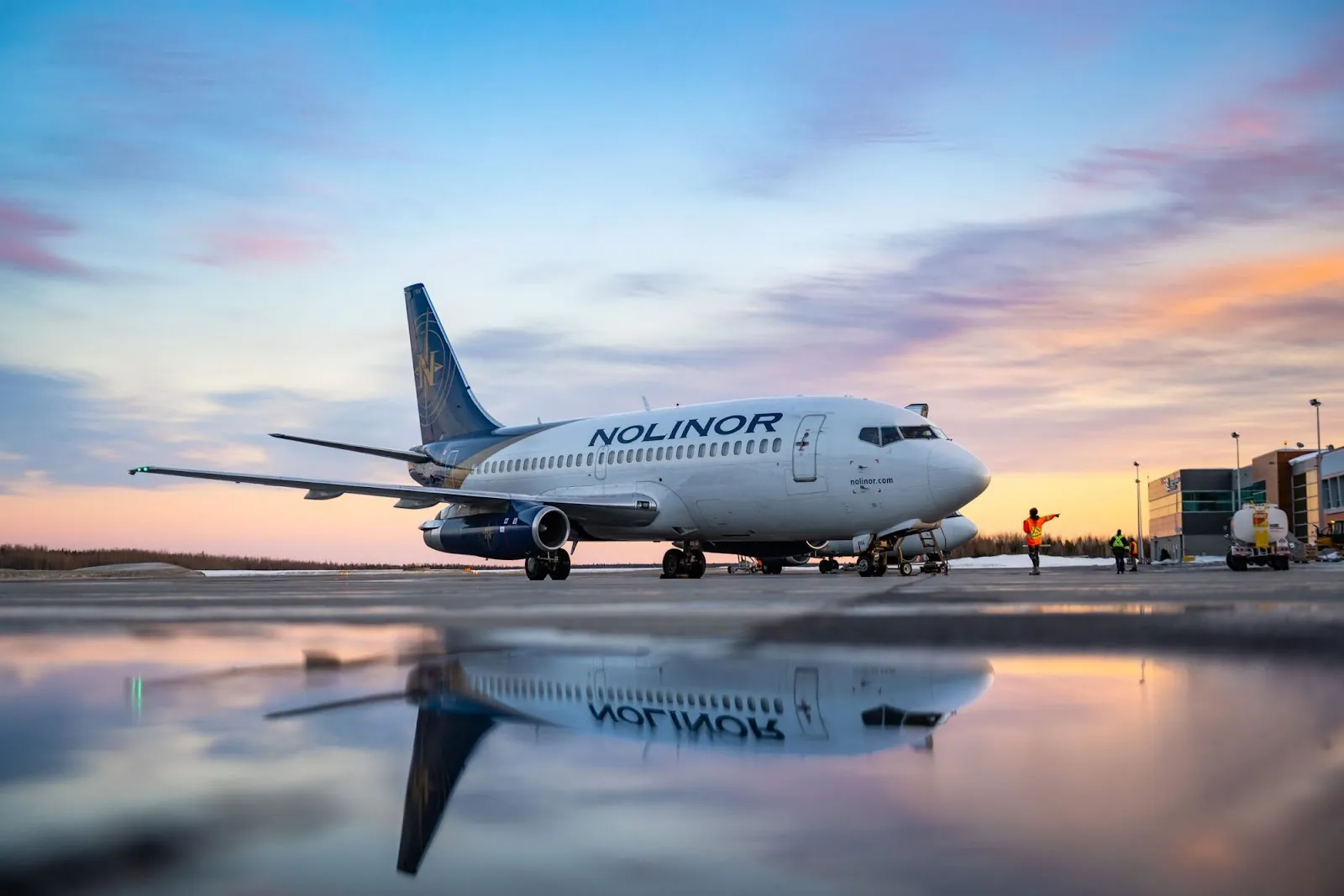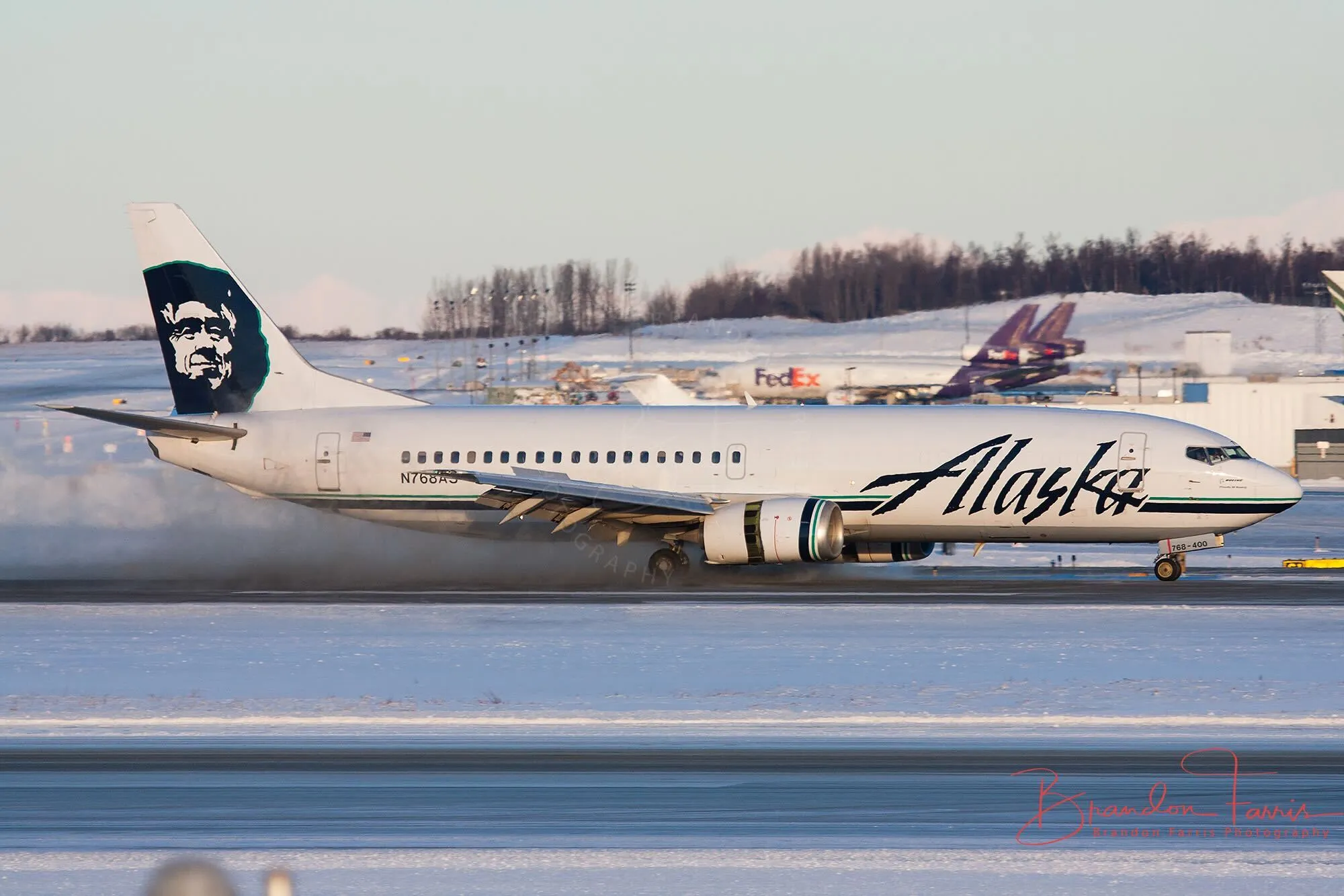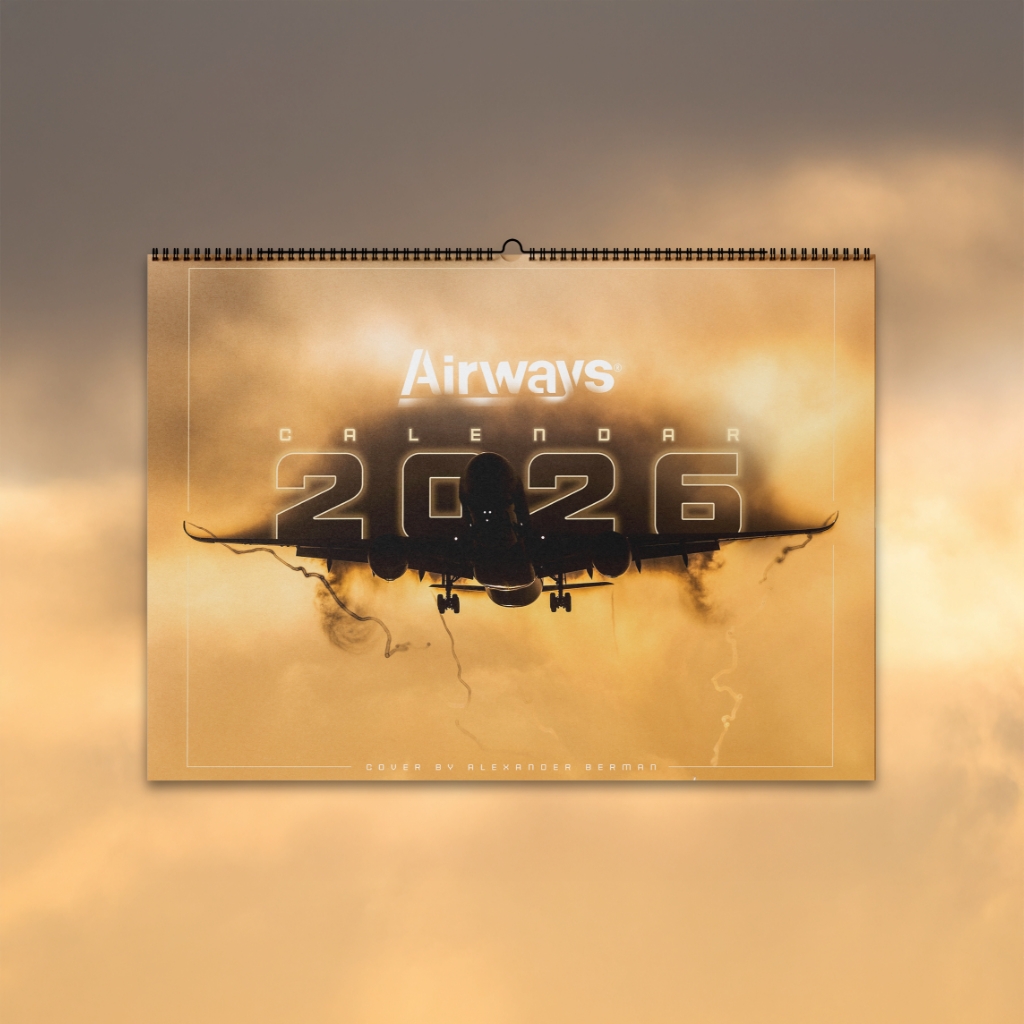DALLAS — You’ve probably boarded a flight where the cabin was full of passengers and suitcases. But what if you stepped onto a jet and found that half of the cabin was filled with cargo, pallets, boxes, even vehicles, while the other half still carried passengers?
Welcome to the world of Combi aircraft, a unique hybrid that once gave airlines the flexibility to carry passengers and freight on the same deck.
Combi Aircraft
As the name suggests, a Combi Aircraft is a hybrid design that combines both passenger and cargo transport in a single flight.
Typically, one section of the aircraft is configured like a standard passenger cabin, with rows of seats, overhead bins, and all the amenities passengers expect. The other section functions as a cargo space, equipped to carry a variety of cargo sizes and types.

Alaska Airlines Boeing 737 Combi. Source: Alaska Airlines
Why Do They Exist?
What’s the point of combis? The answer lies when larger wide-bodies mainly operated long-haul flights. At the time, some routes had limited passenger demand but strong cargo demand.
Combi aircraft were perfect in such cases. Meeting both needs was important, and combi aircraft provided the solution by carrying passengers and cargo together on the same flight.
Design Features
Combi aircraft, like typical freighters, had a rear or front cargo door for loading and unloading, while also retaining a main passenger door. To make them safe, engineers added several unique design elements.
For example, a strong bulkhead was placed between the cargo hold and the passenger cabin, and the cargo area was equipped with fire extinguishers to suppress fires in case of emergencies. The cargo floor was reinforced to handle heavy pallets and containers without damaging the floor or creating a safety risk.
Another crucial feature was the provision of ballast—extra weight placed in the aircraft to keep it properly balanced when carrying varying loads of passengers and freight.
On the passenger side, the cabin looked much like a typical airliner, with galleys at the front and overhead bins for luggage.
Downfall
Although the concept of carrying both passengers and cargo on the same deck was exciting, combi aircraft have experienced a significant decline. Today, the type is increasingly rare, as airlines find it more economical to operate dedicated freighter and passenger aircraft instead of a hybrid.
Combis were popular in an era when air travel was still developing and passenger demand was lower. But in recent decades, air travel has grown rapidly, and airlines discovered it was far more efficient to separate the roles.
The South African Airways (SA) Flight 295 crash in 1987 further accelerated this decline. A fire broke out in the main cargo hold, and the onboard suppression systems were insufficient to contain it. The fire quickly spread, tragically killing all 159 passengers and crew.
This disaster triggered stronger FAA safety requirements. New rules demanded advanced fire suppression systems in main-deck cargo areas, reinforced bulkheads to stop fire and smoke from spreading, and better crew access so flight attendants and pilots could safely reach the cargo area in an emergency.
All these new requirements made operating the combi more expensive and complex. As a result, manufacturers also stopped offering combi variants in their newer aircraft models.
FedEx and the End of Combi Dreams
One interesting story about combi aircraft is how the founder of FedEx (FX) wrote a paper in his university days arguing against the idea of combined passenger and cargo operations. He argued that it was inefficient to load cargo or freight onto passenger jets, saying that putting freight on passenger planes, using passenger routes and schedules, only slowed things down.
He further claimed that having dedicated freighter aircraft was far more ideal, and that freight could even become an overnight service. His professor, however, wasn’t a fan of the idea and reportedly gave him a C.
Fred Smith, however, didn’t back down and continued to work on his concept, eventually launching his own dedicated cargo airline. Interestingly, FX did briefly operate five Boeing 737-200C combi aircraft in its early years. These aircraft remained in service for about 15 months, but despite operating combis, FX never offered a passenger service.
The experiment was short-lived, and the airline quickly shifted to an all-cargo fleet. Today, FX stands as the largest air cargo airline in the world.
.webp)
Historical Combi Operators
Several major airlines once flew combi aircraft, but all have since retired them. Alaska Airlines (AS) operated a fleet of five Boeing 737‑400 Combi planes until October 18, 2017, when they were replaced with three Boeing 737‑700 freighters.
KLM (KL) also operated Boeing 747 Combi jets. When KL bought the 747‑200M, it offered cargo capacity comparable to a standard Boeing 707 while carrying about 200 passengers—an ideal combination for the airline. Satisfied with the results, KL purchased seven Boeing 747‑206M with side cargo doors.
Later, as the airline sought to replace the aging 747‑200Ms, it placed an order for 20 Boeing 747s, 15 of which were combi variants. However, like all trends, the combi era eventually ended as industry economics and new practices took over. KL began phasing out combis and retired the last one in 2020, a process accelerated by the COVID‑19 pandemic.
Several other European airlines also experimented with combi aircraft, including Air France (AF) and Lufthansa (LH). The former used its 747 combis to connect France with destinations across Africa, Asia, the Americas, and the Middle East, while the latter flew them from Germany to major cities worldwide. For both carriers, the combi offered a practical way to balance passenger and cargo demand on long-haul routes.
Nolinor Aviation: Keeping the Combi Alive
You can’t talk about combi aircraft without mentioning Nolinor Aviation (N5). N5 is a small regional carrier based in Northern Canada and is currently the largest commercial operator of the Boeing 737‑200—yes, you’d be surprised that this aircraft type is still flying with some airlines, with N5 leading the pack. Most of their Boeing 737‑200s are in combi configuration, and the carrier recently added its eighth combi 737‑200 to its fleet.
But why is N5 still operating these older aircraft? The answer lies in the airline’s mission. The Boeing 737‑200 is ideally suited for gravel, ice, or unpaved runways common in Northern Canada and has proven itself as a reliable workhorse.
According to Planespotters.net, N5 has 15 aircraft in total, with eight of them being Boeing 737 Combis, making it one of the largest combi operators in the world today.

Source: Nolinor Aviation
Combi Classics: From Trijets to Jumbos
Perhaps the most unique and eye-catching combi aircraft was the Boeing 747. Already an icon in aviation, the “Queen of the Skies” had several combi variants that stood out in airline fleets. The 747-200 saw 78 combis produced out of a total of 393 units built. This trend continued with the most popular version, the 747-400.
Out of the 694 747-400 jets produced, 61 were delivered as combi variants. These numbers highlight that even as the aviation industry entered the twenty-first century, the combi concept remained strong and relevant.
While the Boeing 747 combi is often the most famous, other aircraft also had combi versions. McDonnell Douglas offered a DC-10 in convertible/combi form. According to planecrazy.me.uk, 28 DC-10-30CFs were produced out of 386 DC-10s built in total. The “CF” officially meant Convertible Freighter, allowing either passenger, cargo, or mixed layouts depending on airline needs.
The Boeing 727 trijet also had combi derivatives, with the 727-100C and 727-100QC making up part of its production run. More than 160 aircraft were delivered in these convertible/combi forms. Of these, 111 were the 727-100QC (Quick Change), designed with a roller-bearing floor for palletised galleys, seating, and cargo. This allowed airlines to switch between passenger and freight layouts in as little as 30 minutes.
In addition, dozens of 727-100C models were built. Importantly, in Boeing’s designation system, the “C” stood for Convertible, not Combi, meaning the aircraft could be operated either in all-passenger, all-cargo, or mixed configurations. Many airlines used these aircraft in combi layouts, but the designation itself referred to convertibility.
The Boeing 737 also had several combi variants across its six decades of production, particularly the 737-200C and 737-400C, which remain in service today with carriers in remote regions such as northern Canada. The exact number of 737 combis produced is not known, but they were among the most common narrow-body combis. However, the 737 MAX series does not offer a combi version.
A Farewell to the Combi Era
The story of combi aircraft shows just how flexible and experimental the airline industry once was. Airlines were willing to try new ideas, mixing passengers and cargo on the same flight to maximize utility and serve routes with varying demand.
But like many trends, combis eventually phased out as new technology, studies, and data allowed airlines to squeeze maximum efficiency from their operations. In the end, it all comes down to efficiency.
Though not entirely extinct, the concept still exists in some regions. It’s still fascinating to imagine a time when passengers and freight shared the same deck—a truly unique chapter in aviation history.



.webp)
